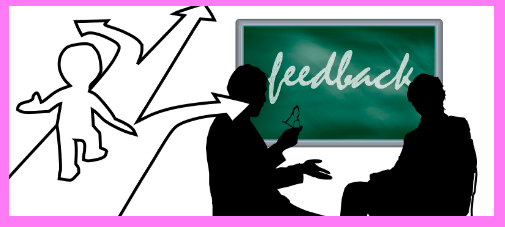


1 – Assess before Teaching: Use un-graded pre-assessments to help prepare for varied student interests and varied levels of readiness. Related strategies include:
- Pre-assessments focused on essential understandings, related skills and misconceptions
- Pre-assessments precede related lesson(s) and are ungraded
- Use pre-assessments to get insights into students’ interests and preferred learning modes
- Varied formats include: 3-2-1 cards, Frayer diagrams, journal entires, quizzes, checklists, concept maps. Also see this article on assessing prior knowledge.
2 – Offer Appropriate Choices: Offer assessment choices aligned to learning targets that permit students to use their strengths to express content mastery. Related strategies include:
- Use common set of criteria (aligned to learning targets) to assess products, regardless of form
- Use secondary set of criteria to evaluate details specific to specific product formats
- Make sure student choices do not trump learning goals – example – student can not opt out of writing if the learning goal involves writing
- Options must be worth the time and effort required for the product
- Consider feasibility – not all assessments can be varied by student choice
- Also see article on differentiated curriculum charts
3 – Provide feedback early and often: Provide timely, specific, understandable feedback and allow time for students to use feedback to improve. Related strategies include:
- Use student friendly language in rubrics
- Use models and exemplars to demonstrate high quality work. Also, see this article on models and descriptive feedback.
- Give opportunities for students to use feedback to refine products
- Make sure feedback clearly communicates what students have done well and what they need to improve
4 – Encourage Self-Assessment & Reflection: Use self assessments to make students more aware of how they learn and what they are doing to set and reach goals. Related strategies include:
- Leave spaces on rubrics for teacher, peer, and self feedback
- Ask student questions such as:
- What do you really understand about … ?
- What question do you have about … ?
- What was the most (least) effective in … ?
- How could you improve … ?
- What would you do differently next time?
- What are you most proud of?
- What are you most disappointed in?
- How difficult was … for you?
- What are you strengths (deficiencies) in … ?
- To what extend has your performance improved over time?
- What grade do you deserve and why?
- How does your learning connect to other learning?
- How has what you’ve learned changed your thinking?
- What follow up work is needed?

Pre-assessment data can help teachers design appropriate remediation and advanced work. A one-size-fits all approach to assessment will favor some students and neglect others. Specific feedback can be used by students to improve. High levels of metacognition support high levels of academic achievement. Reflection on goal setting helps student develop ownership over their choices and results.

Preparation Steps
- Analyze standards – identify related key understandings, enabling skills, and misconceptions
- Design and implement pre-assessments that assess student knowledge, skills, and misconceptions related to learning goals
- Interpret pre-assesment data in order to develop remediation and advanced learning activities (if needed)
- Select from question prompts above (and others) to design regular journal prompts for students to reflect on their learning and goal setting progress
Early Implementation Steps
- Use frequent formative assessments to give students feedback on their learning and products and to fine-tune instruction
- Give students time to use feedback to improve learning and products
- Use reflective journal entries throughout the project to makes students more aware of their learning and goal setting processes and to improve these
- Use clear rubrics and models/exemplars to communicate expectations for high quality work
- Use clear rubrics to guide self- and peer- feedback on student products. Allow students time to use this feedback to improve projects
Advanced Implementation Steps
- Offer student choices (within reason) on assessment and product types
- Develop and use rubrics that allow for flexibility in product formats but still assess common key understandings in student work

